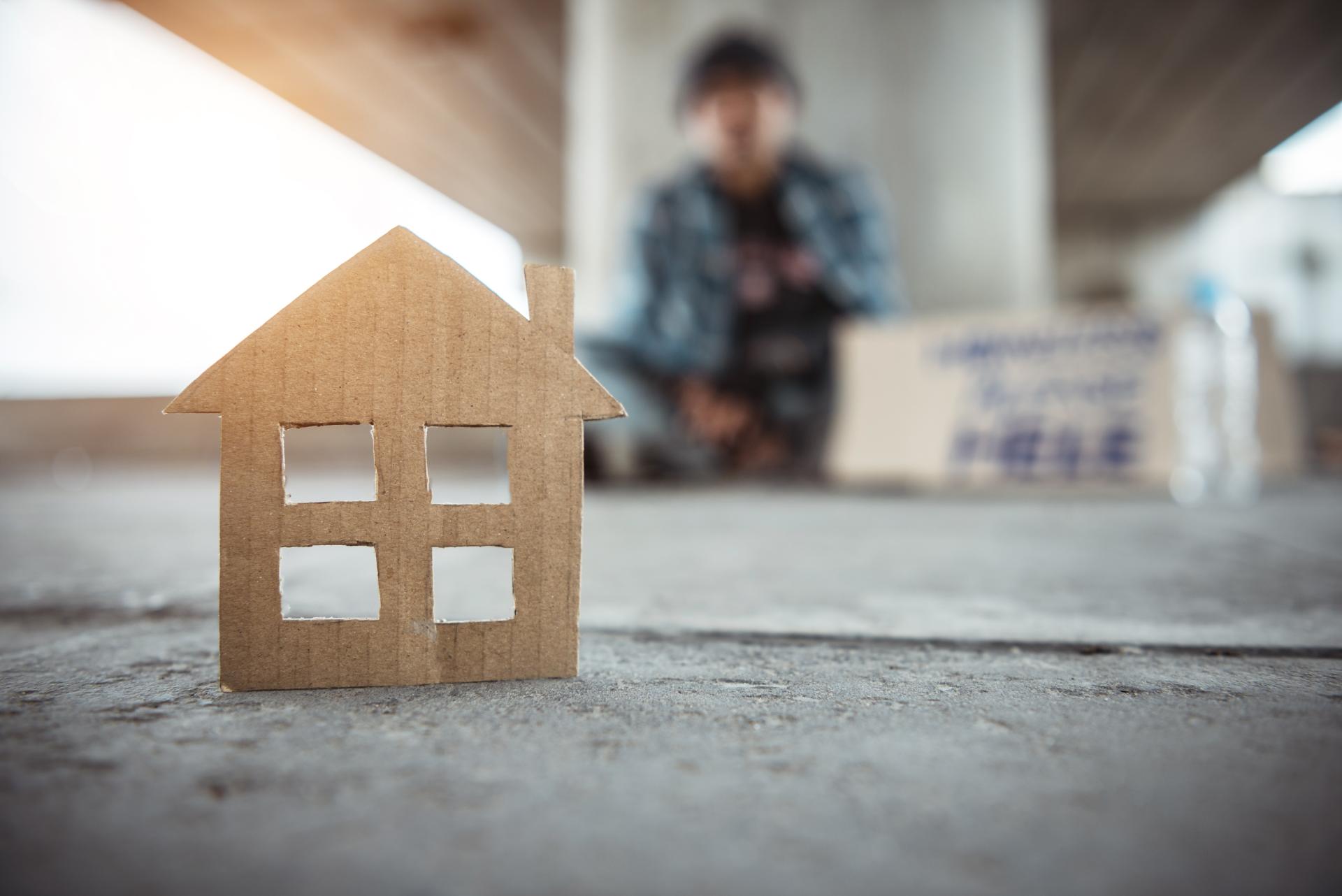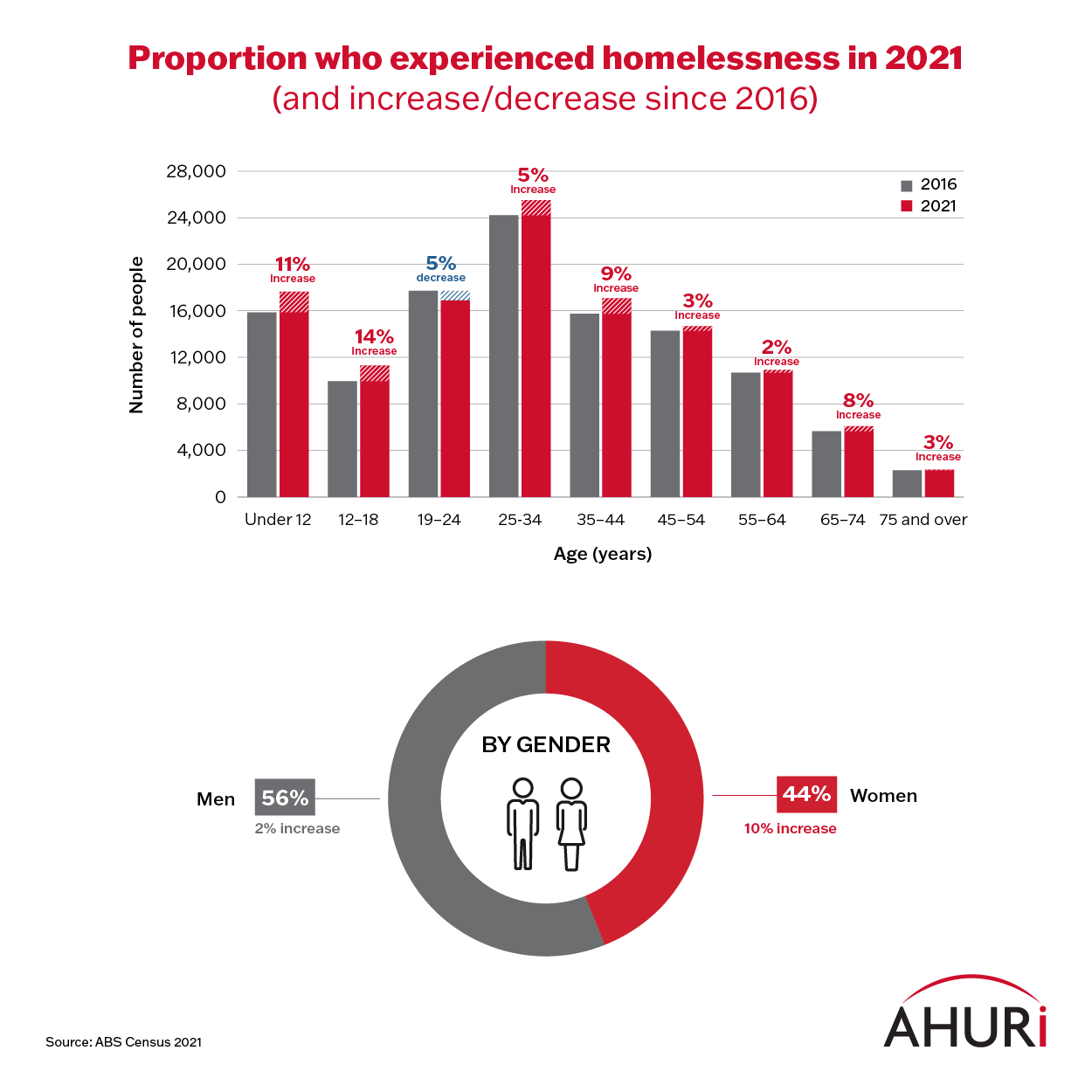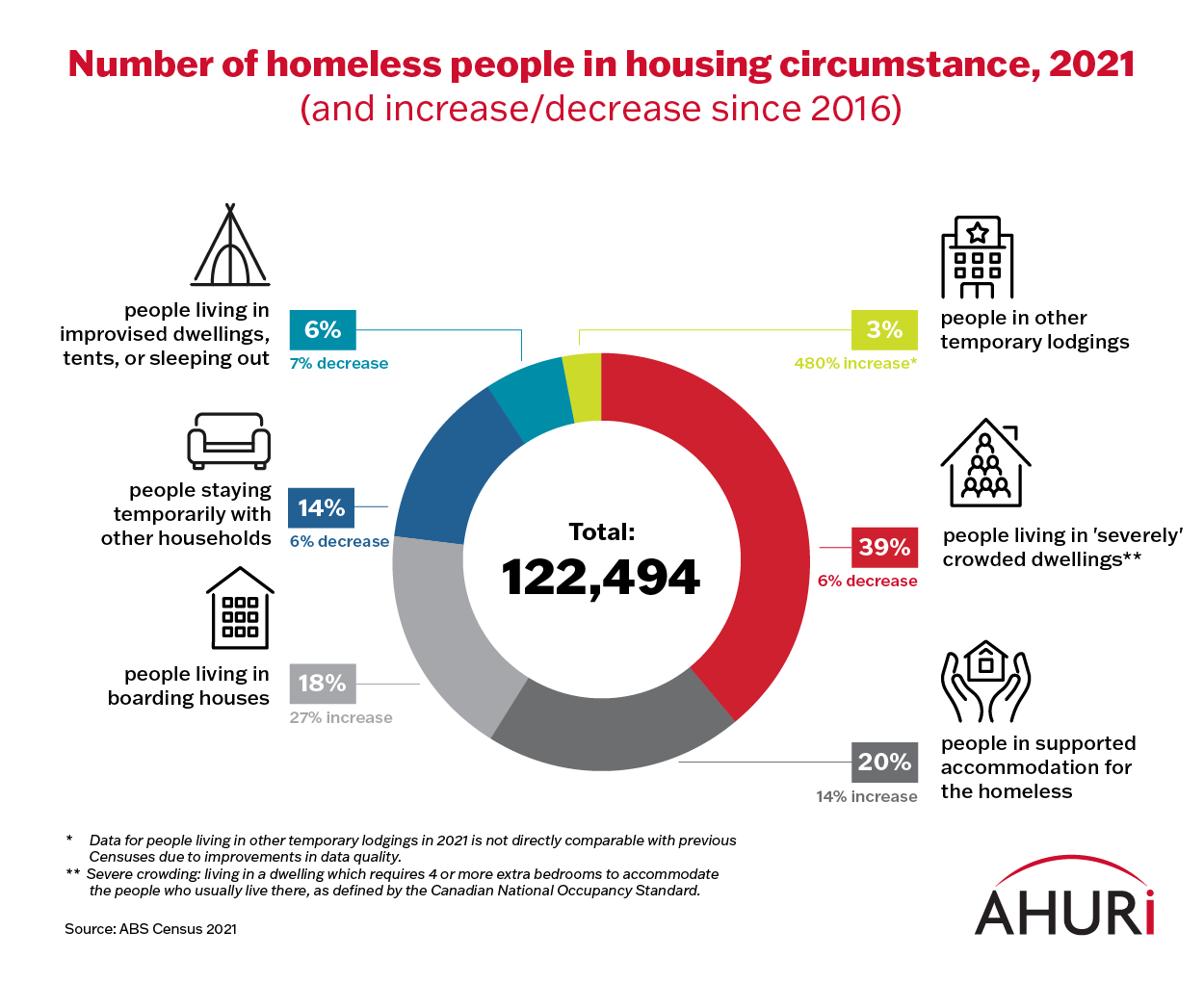
What the 2021 Census data told us about Homelessness
05 Apr 2023
The ABS 2021 Census homelessness data was released in March 2023. The data has shown a number of changes in patterns of homelessness since 2016, however, as the Census was taken during a time of COVID restrictions, these patterns are not necessarily indicative of ongoing trends.
Overall, there was a 5 per cent increase in the number of people recorded as homeless (rising from 116,427 to 122,494 people in 2021), but this rate of increase was lower than the rate of increase for Australia’s total population (9%), which meant the rate of homelessness fell slightly to 48 people per 10,000, down from 50 in 2016.
The greatest increases in homelessness in 2021 were among children and young people, women, Aboriginal and Torres Strait Islander people, and in the state of Tasmania.
Children and young people experienced the worst increases in homelessness
The biggest increases since 2016 in the proportion of people experiencing homelessness in 2021 were children aged less than 12 (up by 11%) and those aged 12 to 18 (up by 14%). Young adults aged 25 to 34 was the group with the greatest number of people experiencing homelessness overall (25,504 people): just as in 2016, 1 in 5 people (21%) recorded as homeless in 2021 were young adults aged 25 to 34.
Young people aged 19 to 24 continue to experience the highest incidence of homelessness, at 91 out of every 10,000; however the proportion (and number) of young people aged 19 to 24 experiencing homelessness dropped by around 5 per cent since 2016. This decrease may reflect the fact that there was only a very small increase in the total number of people aged 19 to 24 in the Australian population (0.8% increase) between 2016 and 2021, a significantly smaller increase than for any other age group (apart from children aged 0 to 4 years). This may be because of the very low numbers of long-term international visitors (both workers and students) who were in Australia at the time of the Census due to COVID restrictions, but who would otherwise have been recorded in the Census.
Homelessness among women was up significantly, with youngest women worst affected
There was a 10 per cent increase in the number of women and a much slower 2 per cent increase in the number of men experiencing homelessness since 2016, although more than half (56%) of all people experiencing homelessness are men.
Whereas the 2016 census saw older women become the fastest growing group of homeless, in 2021 this rate stabilised at a rate of 19 out of every 10,000 women over the age of 55. Meanwhile rates of homelessness for young women aged 12-24 increased from 68 out of every 10,000 in 2016 up to 70 out of every 10,000 in 2021. In contrast, the rate of homelessness for young men in this age group dropped during the same period from 77 per 10,000 in 2016 down to 71 per 10,000 in 2021.
Aboriginal and Torres Strait Islander people continued to experience increasing homelessness rates
Aboriginal and Torres Strait Islander people experiencing homelessness saw an increase of more than 6% with the majority living in severely crowded dwellings. Almost two out of five Aboriginal and Torres Strait Islander people experiencing homelessness are under the age of 18. The rate of Aboriginal and Torres Strait Islander people experiencing homelessness is highest in the Northern Territory, at 1,865 people per 10,000 (almost 1 out of every five Aboriginal and Torres Strait Islander people in the Northern Territory).
Tasmania saw the greatest increase of homelessness among the states and territories
Tasmania had the greatest increase in the number of people experiencing homelessness, from 1,622 to 2,350 people, a 45 per cent increase, followed by Victoria (26%) and South Australia (19%).

Source: ABS Census 2021 Table 1.1 HOMELESS PERSONS, Selected characteristics, 2006, 2011, 2016 and 2021 and ABS Census 2021 Time Series Profile T01, Australia
Government responses during COVID seem to have had an impact
The impacts of government responses to the COVID pandemic can be seen in the changed housing circumstances of people experiencing homelessness. There were reductions in the number of people sleeping rough (-7%); staying temporarily with other households (-6%); and living in 'severely' crowded dwellings (-6%). While NSW had the greatest number of people experiencing homelessness of all the states and territories (35,011 people in 2021), this was a 7% reduction from 2016. All of this suggests that the state and territory temporary homeless strategies in operation during COVID (such as hotels for the homelessness) did help reduce homelessness.
Since 2021 many of these emergency housing strategies have stopped and greater numbers of people may now be experiencing homelessness.

ABS 2021 Census Table 1.1 HOMELESS PERSONS, Selected characteristics, 2016 and 2021.
The long-term trend remains unknown
Ultimately, because of COVID and its unique impacts on restricting immigration and on Governments’ expanding emergency housing supply programs for people experiencing homelessness, the 2021 Census homelessness statistics are an important historical data point in time, but perhaps less indicative of long term homelessness trends in Australia. It is likely the 2016 data and then the 2026 data (the next census to be taken), will tell us much more about the long range trend.
